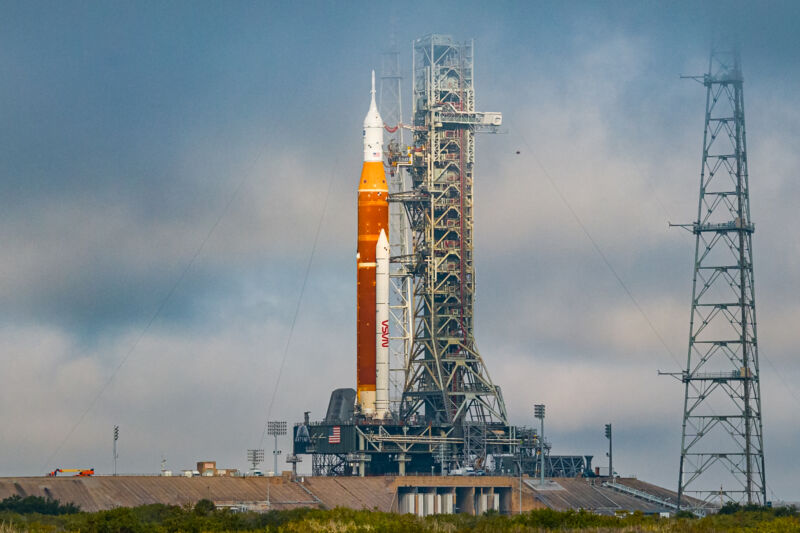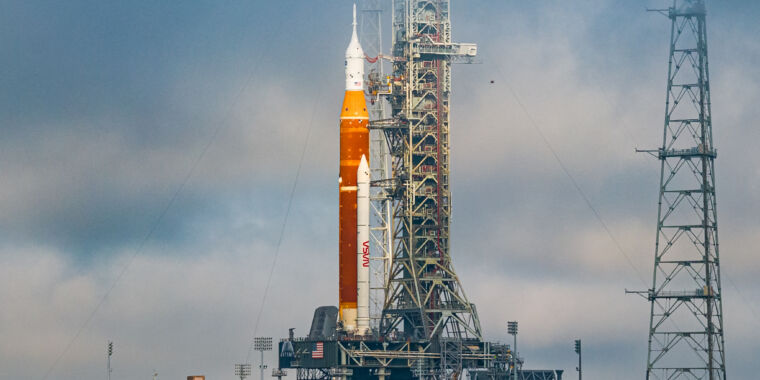
Trevor Mahlman
A Colorado-based company, Wilson Aerospace, is suing Boeing for what it claims is “theft” of its intellectual property. It involves a specific tool known as a Fluid Fitting Torque Device-3 that Wilson developed, and Boeing said was to attach four main engines to the Space Launch System rocket.
The lawsuit was filed Tuesday in US District Court in Seattle, where Boeing was originally based. The lawsuit alleges that Boeing contacted Wilson in March 2014 after learning that the company had created the special torque device, which can accurately install high-torque fittings and nuts in tight spaces.
The engine area at the bottom of the Space Launch System rocket, where four RS-25 engines are mated to the large core stage with its propellant and oxidizer tanks, is such a tight space. Boeing is the prime contractor for the core stage of the Space Launch System rocket, which launched NASA’s Artemis I uncrewed mission around the moon in November 2022.
An “existential threat”
“Without the perfectly installed and mounted motors, the rocket could not be launched,” the lawsuit states. “This was an existential threat to the entire SLS project and especially to Boeing’s continued involvement in the lucrative project. Boeing had not yet figured out a way to attach all the components because of the tight, confined spaces on the ‘boat tail’ of the rocket did not allow the use of Boeing’s existing tools, nor did other tools calibrate the necessary torque with the extreme precision required by NASA for the SLS program.
Wilson said Boeing wanted to use its docking device because it could work in this tight space and the power and precision it needed.
According to the lawsuit, after some initial discussions, Boeing arranged for a “live” demonstration of Wilson’s torque device, which allowed participants to handle and operate it to verify the tool’s power and performance. What Wilson claims not to realize, however, is that some of the participants in this demonstration were not Boeing employees.
“Wilson later learned that at least seven of those present at the live presentation were from outside Boeing and were employees of Wilson’s direct competitors at the time,” the lawsuit said. “This fact was concealed from Wilson, who was tricked by Boeing and the ‘Bogus Boeing Employees’ into giving the presentation by falsely suggesting to Wilson that everyone was a Boeing employee.”
The complaint alleges that Boeing then used information from this demonstration, as well as proprietary drawings and designs, to develop a lower cost solution with Wilson’s competitors. “Boeing hid these facts from Wilson as part of its plan to defraud Wilson and pass Wilson’s IP to his direct competitors,” the lawsuit said.
In response to the 74-page lawsuit, a Boeing spokesperson told Ars, “This lawsuit is riddled with inaccuracies and omissions. We will vigorously defend this in court.”
Ask for jury trial
There are many more allegations in the lawsuit, which seeks to show that Boeing has long engaged in attempts to steal intellectual property from suppliers and contractors and then uses the shield of its work with NASA and the US Department of Defense to self-destruct. to protect against this. activities.
Wilson Aerospace is seeking a jury trial and damages for what it claims is theft of its property and hopes to discourage such behavior in the future.
Typically, such a trial does not end in front of a jury. But if it did, it could reveal some details about Boeing’s development of the core stage and multiple leak issues during refueling attempts of the vehicle at Florida’s Kennedy Space Center.
For example, the lawsuit states, “Boeing’s inferior quality mismatched tools were a cause of the leaks in the SLS projects, and likely caused leaks in equipment belonging to Boeing’s joint venture partners and licensees, which discovery will expose.”
The Space Launch System performed admirably when it finally got off the ground last November, flawlessly launching the Orion spacecraft into orbit. But by the time the rocket did, it was six years late from its original launch date in late 2016 and billions of dollars over budget.

